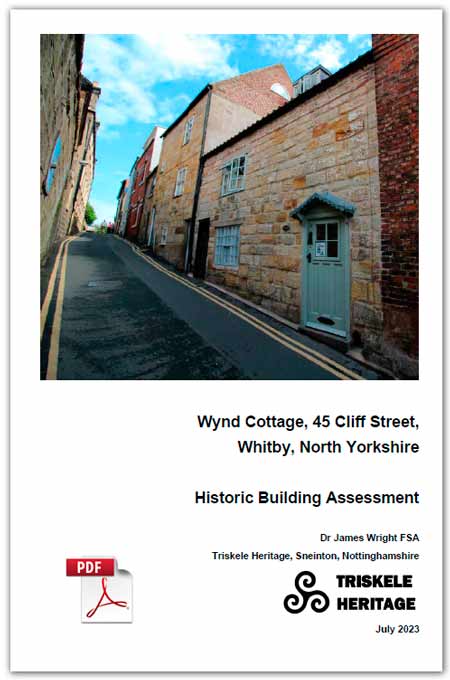Wynd Cottage and Whitby History
The importance of Wynd Cottage and the History of Whitby
The origins of Wynd Cottage pre-date most of what we see in the Historic town of Whitby. How and why it has survived is the focus of our on going research. When first built it was very much on the perifery of the town at the end of a muddy lane, adjacent to farmland.
For 400 years the cottage has held the secrets within it's walls. From the decline of the Abbey through Captin Cook's time in Whitby to our custodianship. We hope to be able to reveal the importance of this building whilst allowing others to enjoy the atmosphere of such a historically important cottage.
We will update this page as our application for a listing progresses.
Wynd Cottage Historic Building Report
We have done plenty of research in to the history of Wynd Cottage over years but as amateurs we could only go so far. In early 2023 we took the plunge and engaged the services of James Wright from Triskele Heritage to undertake some research to assess, date, and phase the structure of the building. James has publish this report on his website "Wynd Cottage, Cliff Street, Whitby". For ease of reading we have also split the report in to three pages for browser based viewing.
For more about the cottage renovation click here
And there's a bit about the cottage history here
The Early Recorded History of Whitby - 656 AD to 1078AD
The Naming of Whitby - from the accademic perspective
Ceadmon's hymn - Translation, notes and context.
The Years of Debauchery at Whitby Abbey - A less favourable look at Abbey Life before the dissolution.
Whitby Pig Farmer 1081- Imaging a peasants perspective of Whitby
Whitby The Farmer's son 1557 - Imagining the thoughts of lowly farmer's son








